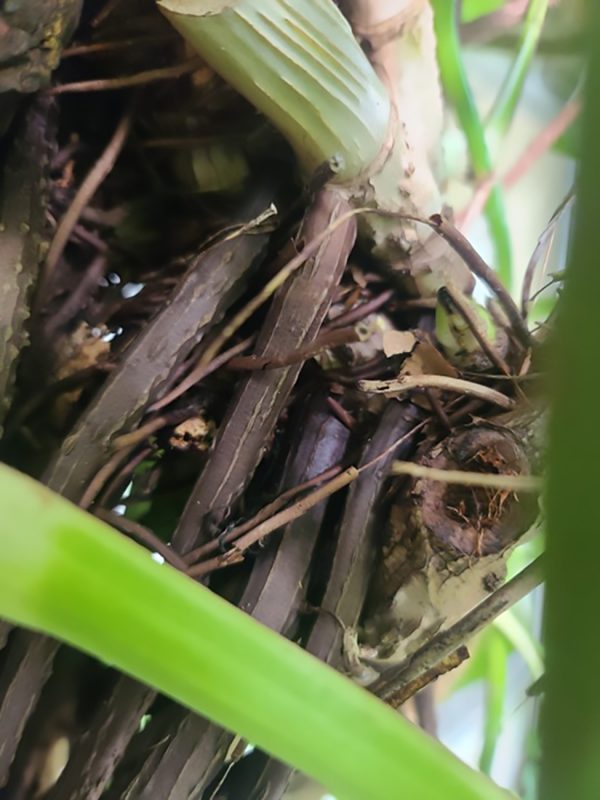Workshop #5 – Botanical and mathematical principles for inspiring design of carbon fibre reinforced concrete

Copyright: SFB/TRR280
Moods
Speaker (botanical part)

Annabell Rjosk studied Biology from 2012-2019 at Technische Universität Dresden in Germany. During her studies, she worked as a student assistent at the Institute of Botany in the Functional Plant Biology and Biomimetics research group of Prof. Dr. Neinhuis. After finishing her master’s studies, she continued working as an assistent in this group. In 2020 she started as a research associate at the SFB/TRR 280 working on new inspirations for carbon concrete components focusing of characterisation of the petiole-lamina transition zone of peltate leaves.

Bennett Pauls studied Material Science at the universities of Gießen and Göttingen in Germany. He finished his master’s thesis in 2019 in cooperation with the Salzgitter Mannesmann Forschung GmbH. In 2020 he started as a research associate at the SFB/TRR 280 working on new inspirations for carbon concrete components focusing of characterisation of root-shoot junctions in the aerial roots of non-woody plants.
Speaker (mathematical part)

Alice Niemeyer received her Diploma in Mathematics at RWTH Aachen in 1988 and her Phd at ANU (Canberra, Australia), in 1994. She held several positions at UWA (Western Australia) before becoming a Professor at NUI Maynooth (Ireland) and subsequently at RWTH Aachen University in 2015. Her research interests lie in the areas of Computational Group Theory and Simplicial Surfaces. As a member of the SFB TRR 280, she is particularly interested in applying group theoretic methods and efficient algorithms for designing geometric structures useful in Engineering applications.

Daniel Robertz studied Mathematics at RWTH Aachen University and received his PhD in Mathematics in 2006. After postdoctoral research at the University of California, Berkeley, USA, he returned to RWTH Aachen University and attained the habilitation in Mathematics in 2012. From 2013 to 2022 he was a Lecturer in Pure Mathematics at the University of Plymouth, UK. Since 2022 he is professor at RWTH Aachen University. His research interests primarily focus on algorithmic algebra and its applications, in particular to computational geometry and simplicial surfaces.
Speaker (Concrete structures part)

Iurii Vakaliuk studied Architecture at Moscow State University of Civil Engineering where he graduated with a B.Arch. in 2015. He later completed the Master’s Program ACCESS Advanced Computational and Civil Engineering Structural Studies in TU Dresden with M. Sc. The following activity was related to the development of the programmed tools for the analysis of the TRC structures. From 2018 until 2020 he was contributing to the C3 demonstrator house CUBE with the development of the geometrical descriptive part. Since 2020 Iurii takes part as one of the members of the project SFB/TRR 280 with the purpose of developing the analysis method for bioinspired TRC structures.
Workshop #5 – Botanical and mathematical principles for inspiring design of carbon fibre reinforced concrete
The workshop’s objective is to give an overview of an interdisciplinary process of inspiration for novel concrete structures reinforced with carbon (textiles).
The target is to find new methods for designing structures with highly reduced material use. In the workshop, leaf-stemp-connections and stemp-root-connections are taken a closer look at to give an understanding on their bearing principles. Next, the idea of considering mathematical symmetry principles to create three-dimensional assemblies of basic objects with high stability due to geometrical interlocking. Finally, a roadmap is presented regarding the adoption of interdisciplinary inspiration (here: botany and mathematics) into concrete construction to open up a novel principle of design.
The workshop is three-fold. Each session comprises an introduction part followed by a practical part. The practical part includes microscopic investigations, programming, geometry folding and passing around small demonstrators.
11:30 – 13:00: Reinforcement Structures in Plants
Plant features can serve as inspiration for a multitude of applications. The basic methods to investigate their inner structure by light microscopy will be carried out. Peltate leaves and aerial roots will be evaluated in regard to their distinct fiber arrangement in the junction.
14:00 – 15:30: Symmetry Principles as Inspiration for Structures
In this workshop we will explore ways to employ symmetries to generate geometric building blocks which can be assembled in such a way that they are kinematically restrained by a frame. Participants will be introduced to planar symmetries and will generate their own 3D building blocks by this principle. They will visualize and analyse the resulting assemblies on a computer.
No familiarity with the underlying algebraic concepts is required.
16:00 – 17:30: Generative Design in Textile Reinforced Concrete Structures
In nature, shell structures can be found in diverse variations. Compared to beams, where the bending stress increases disproportionately due to its weight, shell structures can handle significantly larger spans with minimal material expenditure. A similar performance can be reached in thin-walled structures made of textile reinforced concrete (TRC). The workshop is focused on the execution of the prelaminar generative search of the TRC structures based on predefined mathematical patterns using the programming environment of Grasshopper 3D software in combination with Karamba 3D as a FEM tool. Further, the achieved results should be precisely analysed considering the structural boundaries of the TRC material.




